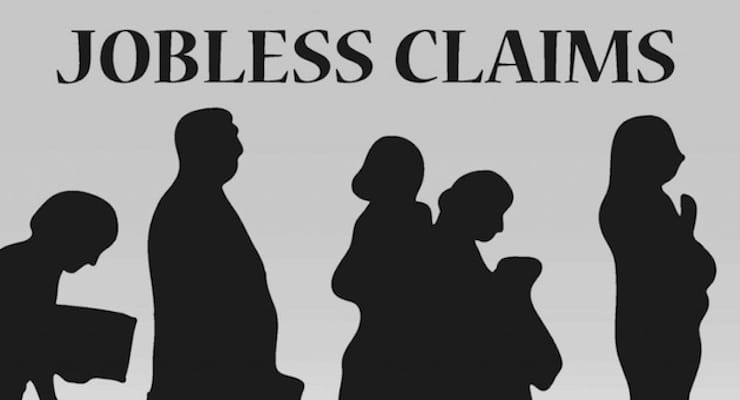

Weekly Jobless Claims Graphic. Number of Americans applying for first-time jobless benefits.
The Labor Department said on Thursday weekly jobless claims fell slightly by 1,000 to a seasonally adjusted 267,000 for the week ending May 28. Claims for the prior week were unrevised.
Economists polled by Reuters had forecast the number of Americans filing first-time claims for state unemployment benefits would rise to 270,000.
A Labor Department analyst said and no state was triggered “on” the Extended Benefits program during the week ending May 14. Worth noting, claims for Tennessee, Virginia, Wyoming, Puerto Rico and Hawaii were estimated because of the Memorial Day holiday.
The four-week moving average–which is widely considered to be a better gauge as it irons out volatility–came in at 276,750. That’s a decrease of 1,750 from the previous week’s unrevised average of 278,500.
While claims have now been below 300,000 for 65 straight weeks, or the longest streak below the threshold associated with a strong job market since 1973, the historically high number of long-term unemployed Americans impacts the data. Basically, the number of people eligible to apply for unemployment insurance is so low it is not comparable to many of those years.
There were 7,712 former Federal civilian employees claiming UI benefits for the week ending May 14, a decrease of 42 from the previous week. Newly discharged veterans claiming benefits totaled 13,526, a decrease of 30 from the prior week.
The highest insured unemployment rates in the week ending May 14 were in Alaska (3.6), Wyoming (2.8), West Virginia (2.6), New Jersey (2.4), Puerto Rico (2.4), California (2.3), Pennsylvania (2.3), Connecticut (2.1), Illinois (1.9), Massachusetts (1.9), and Nevada (1.9).
The largest increases in initial claims for the week ending May 21 were in Tennessee (+2,426), Oregon (+1,882), Illinois (+859), Maryland (+565), and Mississippi (+552), while the largest decreases were in Michigan (-3,075), California (-2,952), Missouri (-2,352), Pennsylvania (-2,016), and New York (-1,570).





